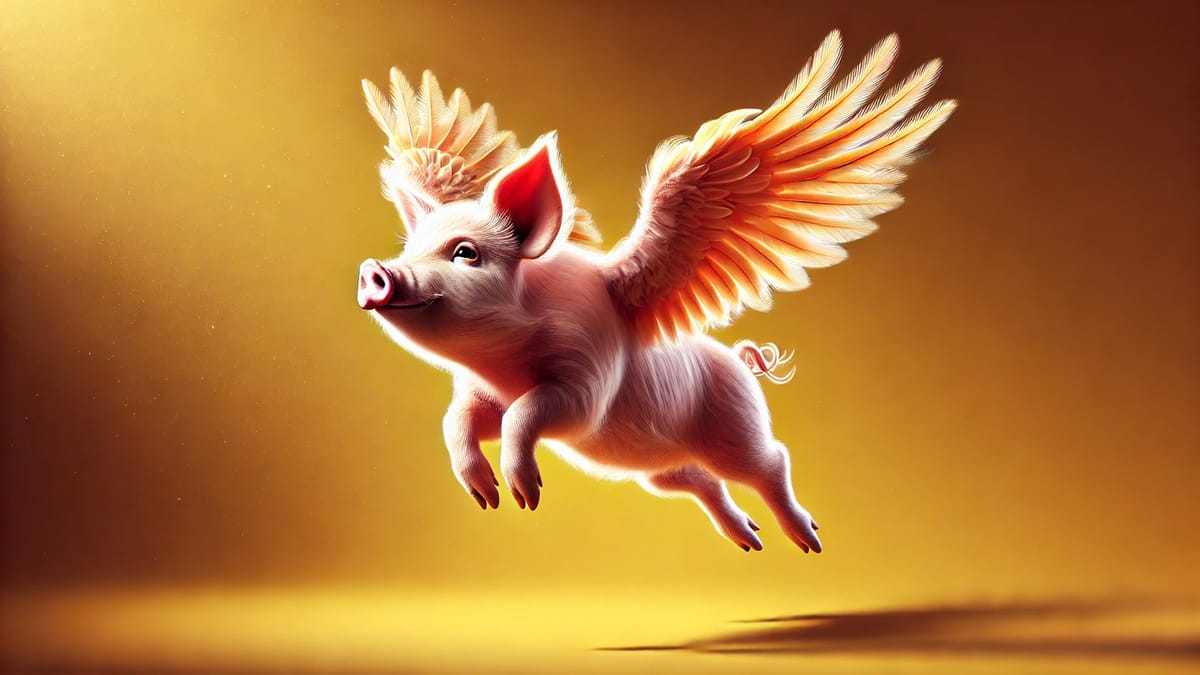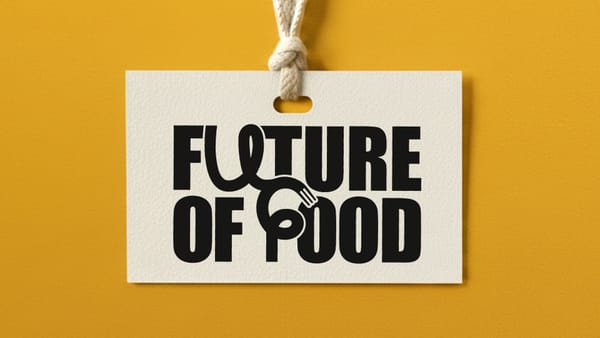UNSTUCK 019: Andre Menezes On Finding What Alt Protein Can Do That Meat Can’t
First-hand lessons on challenging Big Meat from TiNDLE’s former CEO

Andre Menezes, the co-founder and former CEO of plant-based leader TiNDLE, is someone we have long been in violent agreement with on the necessity of a consumer-centric philosophy. We caught up with him to dig into the importance of a challenger mindset and how alt protein brands can begin to take on one of the biggest food categories in the world. His views are his own since he is no longer involved with the company.
Let’s start with the basics, meat is an unusually unbranded category. Do the rules of challenger brands even apply in this space when there’s not a clear brand target to position against?
You’re right that meat is commoditized and 99% unbranded. We discussed this during the creation of TiNDLE, whether there was room for meat to even be branded. The interesting thing about meat is that when you’re buying it, it behaves as a commodity. But then in practically every culture in the world, meat is the centerpiece of the dining experience with your family or your friends, and the emotional connection you have with it is very similar to a brand. So what we need to challenge is meat as a brand in itself, not just a Tyson or a Birds Eye.
“What we need to challenge is meat as a brand in itself, not just a Tyson or a Birds Eye”
We’ve always talked about the key to making TiNDLE so attractive was going after this desire and emotional connection working with the best chefs, best restaurants, best bars. It was completely different from everyone else who went straight to the shelf and said buy us because we’re better for the planet and sorry for tasting bad.
So were you able to find the problem people had in their relationship with meat that TiNDLE could fix and that would therefore present an opening for the brand and the category?
This is the big learning and big missing link of everything all of us have done in the sector. Is there something wrong with meat? Absolutely! The planet cannot sustain the growing consumption of meat, there will be 10bn people in 2050 and there’s simply no land and no water to feed them all meat even at current levels. Not to mention that it will be impossible to control global warming if we continue farming animals the way we do. So meat is the biggest villain out there, there are many things that are very very wrong with it.
“None of the things that are broken with meat are issues that consumers care about when buying food”
The issue is that none of those things that are broken with meat are issues that consumers or customers care about in the moment when they’re buying food, except for a very small group that is commercially negligible. These are only topics that exist at a societal level and that governments care about, or at least should care about. This is the real problem, and everyone in the industry got it so wrong.
If there were no structural consumer pain points to solve for with meat, then what were the new benefits you introduced when launching TiNDLE?
We’ve been open and public about the fact that with TiNDLE we might have lost some of that angle when we went into supermarkets with nuggets and burger patties like everyone else. Back then the rationale was that this is what sells, so you have to go into the biggest categories or you just become a niche of a niche. This was logical and well thought through, but after launch we concluded it wasn’t enough because there’s not a lot of reasons for consumers to switch from regular to plant based nuggets, and even if they do, there are so many players it becomes a tiny share for any one brand.
“What can I do with alt protein that meat can't?”
We saw this early on and started to work on a portfolio of products that would address it. The angle here was that I wanted to make a product that was great on its own and wasn’t easy to make with conventional chicken. What can I do that meat can’t? This is where the stuffed chicken idea came from and you’re seeing launches like Chicken Kiev or Chicken Parmigiana. They’re a mess if you try to do them at home, and with TiNDLE it’s easy. Does it give us some excitement to drive trial? Yes. Is it enough to grow the category? I don’t know.
What do you think could grow the category then? Is it the GFI price, taste, convenience idea or a top-down cultural change with the likes of Vow’s mammoth meatballs. Where do you stand on these theories of change or is there a third way?
I used to be in the GFI line of thinking, but today I couldn’t disagree more. Let’s take a look at each part of that logic. Product was perceived as the big bottle neck, then people poured in millions into R&D and now it’s done. And it’s easy to verify this with blind taste tests with many clients in multiple geographies, we’re at least on par and often beat chicken.
Then there's the price. It’s widely known that all of us – Impossible, Beyond, TiNDLE – have tried crazy ways to solve for price, from subsidizing for parity to the point of giving it away for free to kickstart some deals and contracts. But the fact is it doesn’t change much. The elasticity is close to zero. Pricing at parity doesn’t change anything when compared to a slightly higher premium or even a slight discount. Lidl is at price parity for conventional and plant based, one sells multiple times more than the other. Pricing for parity will not work on its own.
Finally on the dimension of convenience, alt protein is already a bit more convenient than meat. Maybe there’s an argument for making it way more convenient, but it’s not worse, so getting to parity won’t solve things here either.
“Just getting to parity will not solve anything”
A top down cultural change, going for Michelin stars and making it cool, could work but unfortunately it takes too long for companies working on a VC-backed model and time horizon. They will not wait decades for change, so it’s not a silver bullet solution.
But there is a third possibility to create much bigger momentum than we have today, within timelines that make sense for all the money that’s been poured into alt protein not to be wasted. I think that the third driver of change is going to be food security, countries having alternative ways to produce protein and making sure the companies are viable. Singapore has seen this first and invested heavily, although mostly on upstream capacity and R&D without matching initiatives on the demand side. The Arab Gulf countries will probably take a similar route, or at least they should be considering given their scarcity of water and the rising tensions geopolitically.
What’s missing here is the positioning. How can we bring in the challenger mindset to demonstrate we’re superior and different?
I think Oatly has done that with the oat milk category, and nobody has been able to do it with plant based meat yet. Creating desire for plant-based meat is not enough. We’ve been taught over centuries now that meat has to be eaten every day, and that the best recipes we’re used to eating are meat based. We have to attack and erode that notion first.
”We have to attack and erode the notion that meat has to be eaten every day”
That’s why Oatly’s “it’s like milk but made for humans” is interesting because it repositions milk as weird because it’s obviously made for cows. It’s much harder in the case of meat, but we have to make it feel old fashioned and not desirable any more. If people have no reason to look for something new, why would they?
Do you think a brand can do that job or does it have to be done at a category level?
I used to believe so, but I don’t any more. No brand can single-handedly fight against the power of meat as a brand. We have a $1.3tn industry we consume every day that has a very positive perception ingrained with billions of people. It is not possible for one brand to do it.
Ultimately meat is going to become so expensive that there will be no option but to switch because there will be no more land and water to sustain its production. The population is growing, consumption is growing, resources are not. That is going to happen by 2050 for sure, the market will adjust itself by raising prices of a scarce product.
“Meat will eventually become so expensive we will have to switch, but how do we accelerate this shift?”
The question is whether there’s an alternative to accelerate this shift? The only alternative right now in my view is a macro alternative, not a micro one. It can be done on a country level, a state level, a campus level, but it’s naive to believe that consumers will make that decision on their own. It’s important to be brutally honest about this, because otherwise it’s a death certificate for the category.
In that context, what are some new ways to challenge the status quo that could work for the next generation of alt-protein brands?
The category will need to evolve and stand on its own merits, not as a mimic of something familiar. This evolution might take different forms, but I’m convinced it cannot be “just another nugget suitable for vegans”—whether plant-based, cell-based, or mycelium - regardless of how tasty, well priced or convenient it is. The future will likely involve offering innovative solutions that address issues the meat industry cannot resolve, providing real consumer value in new ways.
The UNSTUCK point of view
New categories emerge and develop as others stand on the shoulders of those who have gone before them. Andre could not be more clear - the parity path to success is an industry myth that must be put to bed. Change will come from macro forces but that’s not something brands can afford to sit around and wait for. You need to be a challenger, not an alternative. What can your product/ingredient do that the category incumbent can’t, that is relevant to consumer needs in that category? That is the starting point of your proposition from which you should relentlessly focus on delivering that promise.






